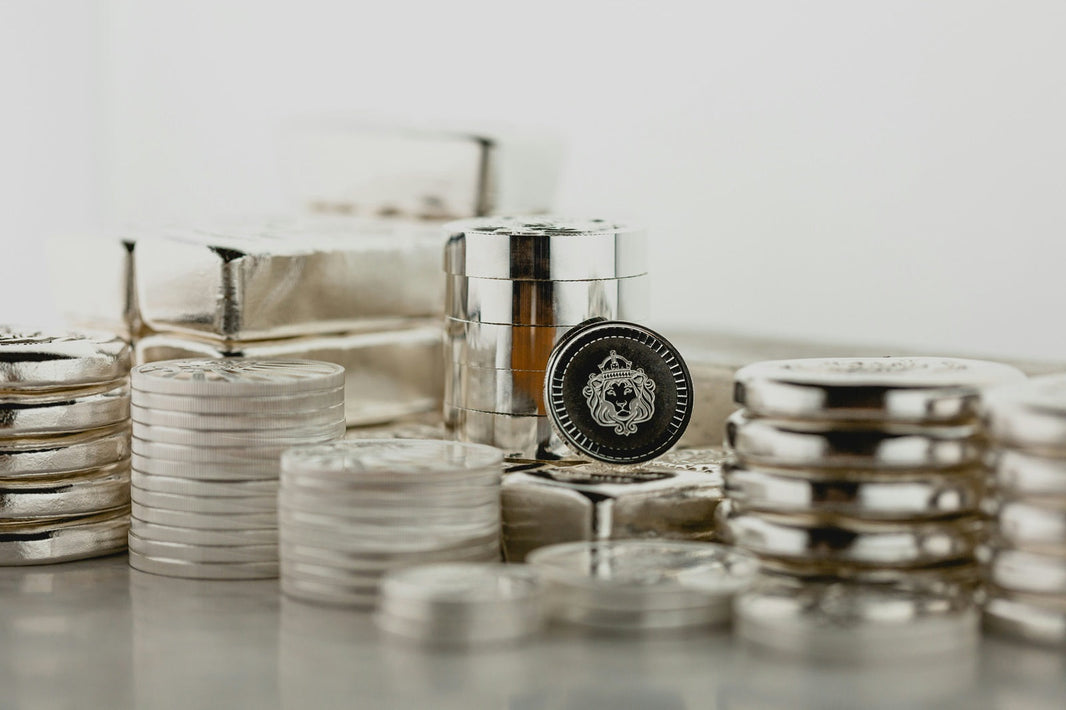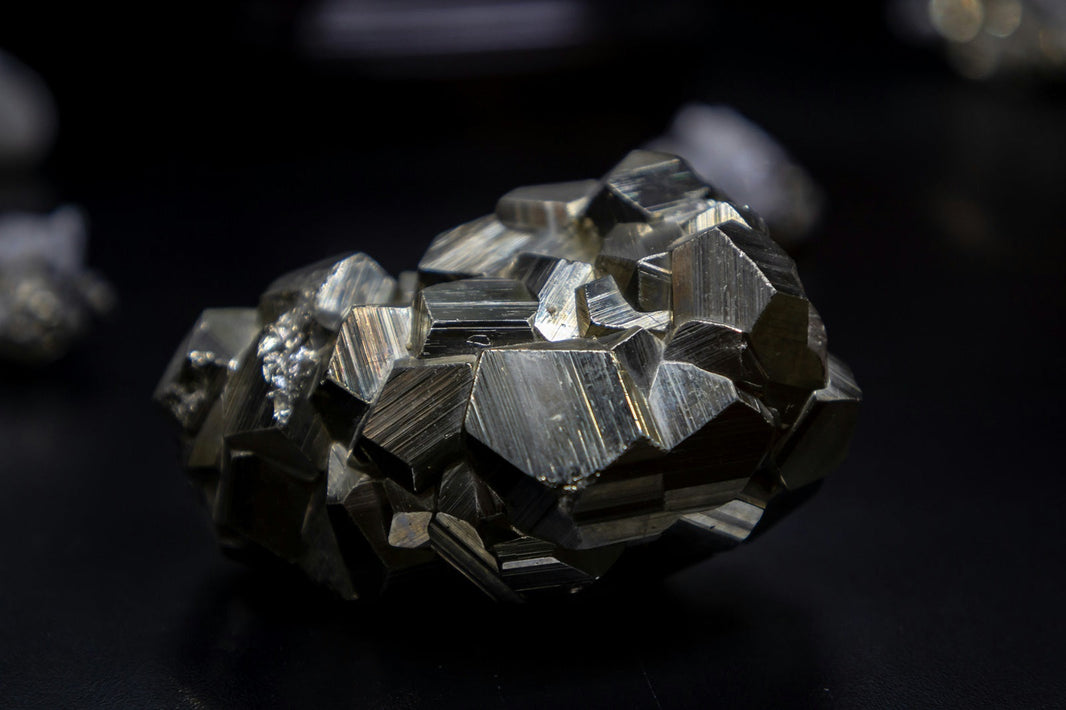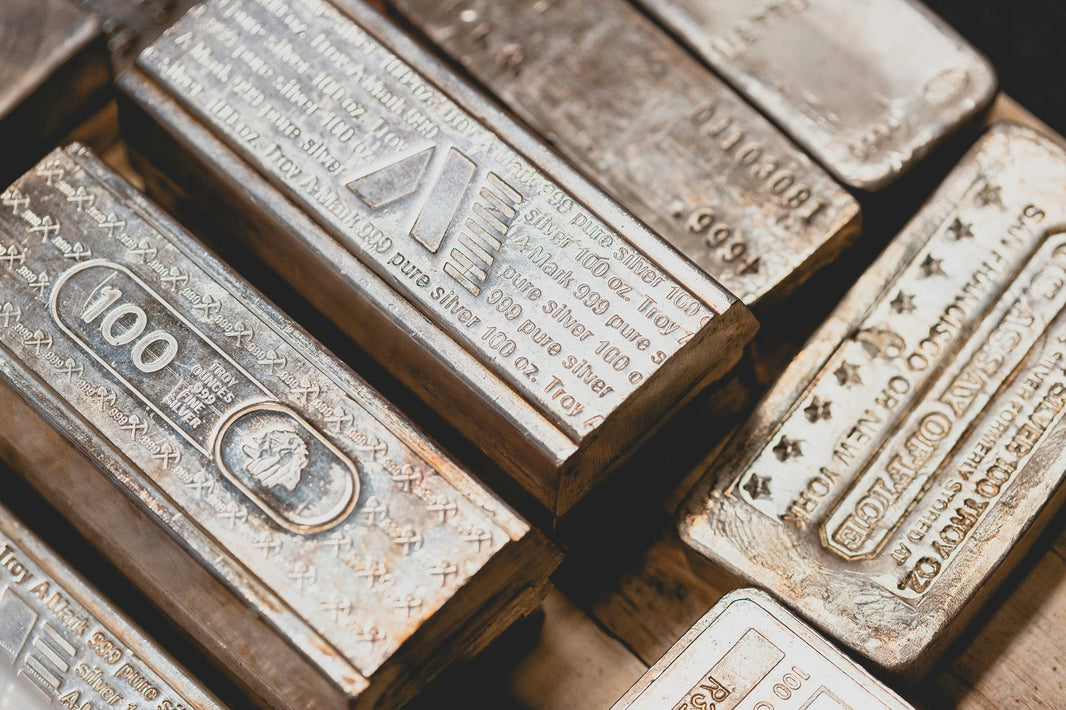Platinum Spot Price Chart
Understanding platinum
Stability: With a density exceeding gold, platinum boasts an impressive weight in your hand. This density translates to exceptional durability, making platinum resistant to wear and tear. Furthermore, its incredibly high melting point of 3,215°F allows it to withstand extreme temperatures without succumbing to deformation.
Malleable: Imagine stretching a metal as easily as shaping clay. Platinum possesses remarkable malleability, meaning it can be hammered or pressed into thin sheets without breaking. This property makes it ideal for intricate jewelry designs and industrial applications requiring precise shaping.
Unreactive: Unlike many metals that readily tarnish or corrode, platinum remains remarkably resistant to chemical attack. This property makes it perfect for environments with harsh chemicals, such as in laboratories or within catalytic converters.
Nature's Treasure: Unlike its more abundant cousin, gold, platinum is a rare earth element. Found primarily in South Africa and Russia, its scarcity adds to its value and contributes to price fluctuations. The mining process itself is complex, involving deep excavations and intricate separation techniques to extract platinum from surrounding rock.
Supply and Demand: The price of platinum hinges on a delicate balance between supply and demand. On the supply side, factors like mine closures, production limitations, and political instability in producing regions can significantly impact availability. Demand, on the other hand, is driven by various industries like automotive (catalytic converters), jewelry, and electronics.
Economic factors like global growth and currency fluctuations also play a role, influencing consumer spending and industrial production.
Factors affecting platinum price
- Supply and Demand Dynamics: Global platinum production heavily influences its price. Mine closures or production slowdowns can restrict supply, driving prices up. Conversely, discoveries of new reserves or increased production can lead to price dips.
- The Automotive Industry: A Driving Force: Platinum plays a crucial role in automotive catalytic converters, reducing harmful emissions. Fluctuations in car sales and the adoption of alternative technologies like electric vehicles can significantly impact platinum demand and, consequently, its price.
- Jewelry's Enduring Appeal: Platinum's lustrous sheen and resistance to tarnish make it a popular choice for high-end jewelry. Consumer trends in jewelry purchases, particularly in major markets like China and India, can influence platinum demand.
- Investment Trends and the Speculative Market: Platinum is seen as a safe-haven asset during economic uncertainties. Increased investor interest in platinum futures contracts or ETFs (Exchange-Traded Funds) can drive prices up. However, these speculative investments can also lead to price volatility.
- Global Economic Conditions: A booming global economy often translates to increased demand for platinum across various industries, pushing prices upwards. Conversely, economic downturns can lead to decreased demand and lower prices. Inflation can also erode the purchasing power of platinum, impacting its market value.
- Geopolitical Tensions: A Disruptive Force: Political instability in major platinum-producing regions can disrupt supply chains and create uncertainty in the market. This can lead to price spikes as investors hedge against potential supply disruptions.
- The Rise of Substitute Metals: Palladium and rhodium, close relatives of platinum on the periodic table, share some of its properties and can be used as substitutes in certain applications. Fluctuations in the prices of these substitute metals can influence platinum's price as manufacturers weigh cost-effectiveness.
Historical price trends (gap-up and gap-down)
Analyzing historical platinum price movements reveals a dynamic landscape shaped by various factors. The past 50 years have seen periods of significant price surges and dips. For example, the oil crisis in the 1970s led to increased demand for platinum in catalytic converters, driving prices up. Conversely, the global financial crisis of 2008 saw a drop in demand across industries, leading to a price decline. Studying these historical trends can provide valuable insights, but it's important to remember that past performance is not always indicative of future results.

The future of platinum
Industry experts hold diverse opinions on the future of platinum prices. Some predict a rise due to factors like growing demand in developing economies and the potential for new applications in hydrogen fuel cell technology. Others foresee a more subdued future, with the rise of electric vehicles potentially impacting demand in the automotive sector.
- Technological advancements could play a significant role in the future of platinum. If scientists develop efficient methods to recycle platinum from spent catalytic converters and electronics, it could lead to a more stable supply and potentially moderate price fluctuations. Additionally, research into using platinum in next-generation solar cells and hydrogen fuel cells could open up new avenues for demand, impacting the price outlook.
- Environmental regulations are another factor to consider. As governments worldwide push for stricter emission standards, the demand for platinum in catalytic converters could remain steady or even increase. This is because platinum is a highly effective catalyst, and there may not be readily available substitutes that meet the same performance standards.
- The discovery of new platinum reserves could also influence prices. Geological surveys are constantly exploring new regions for potential platinum deposits. If significant new reserves are identified, it could increase overall supply and potentially put downward pressure on prices. However, the exploration and development of new mines can be a lengthy and expensive process.
- The rise of the electric vehicle (EV) market presents a significant challenge to platinum demand in the automotive sector. Electric vehicles do not require catalytic converters, which are a major consumer of platinum. The pace of EV adoption and the development of alternative internal combustion engine technologies that use less platinum will significantly impact future demand.
Unexpected uses of platinum

Platinum's unique properties make it a valuable asset across various industries. Here's a closer look at some of its key applications:
-
Automotive Industry (Catalytic Converters): As mentioned earlier, platinum plays a vital role in catalytic converters, which reduce harmful emissions from gasoline and diesel vehicles. Its ability to withstand high temperatures and resist chemical degradation makes it ideal for this application.
-
Jewelry: Platinum's lustrous white sheen and exceptional durability have made it a popular choice for high-end jewelry. It is particularly well-suited for intricate designs due to its malleability and resistance to tarnish.
-
Chemical Industry: In the chemical industry, platinum catalysts are used in various processes, such as the production of petroleum, pharmaceuticals, and fertilizers. Platinum's resistance to corrosion and its ability to accelerate chemical reactions make it a valuable tool for these applications.
-
Electronics: Conductive and resistant to corrosion, platinum finds use in electrical contacts and electrodes within various electronic devices.
-
Petroleum Refining: Platinum catalysts are employed in petroleum refining processes to improve the quality of gasoline and other fuels.
-
Medical Applications: Platinum's biocompatibility makes it suitable for various medical applications, including catheters, stents, and some cancer-fighting drugs.
The diverse applications of platinum highlight its importance in various sectors of the global economy. Understanding these applications is crucial for comprehending the factors influencing platinum demand and, consequently, its price.
Investing in platinum

For investors seeking to add a touch of platinum to their portfolios, several options exist:
-
Physical Platinum Bars and Coins: Investors can purchase physical platinum bars and coins from reputable dealers. This offers a tangible asset but comes with storage and insurance considerations.
-
Platinum ETFs (Exchange-Traded Funds): These investment vehicles track the price of platinum without the need for physical storage. ETFs offer a more liquid and potentially lower-cost way to invest in platinum.
-
Platinum Futures Contracts: For experienced investors, futures contracts allow speculation on future platinum prices. However, futures contracts involve leverage and carry significant risks of substantial financial loss.
Before investing in platinum, it's crucial to consider your investment goals, risk tolerance, and investment horizon. Platinum, like any investment, carries inherent risks. Prices can fluctuate significantly, and there is no guarantee of profit. Conduct thorough research, understand the market dynamics, and consult with a financial advisor before making any investment decisions.
What are the current prices for platinum?
Platinum's journey throughout history reflects its enduring value. From its symbolic use in ancient Egypt to its crucial role in modern technology, this precious metal continues to captivate us. The factors influencing its price are multifaceted, encompassing supply and demand dynamics, global economic conditions, and technological advancements. As we look towards the future, platinum's diverse applications and potential for new discoveries ensure its continued relevance.
The next time you admire a piece of platinum jewelry or witness a car glide by with a clean exhaust, take a moment to appreciate the remarkable properties of this metal and the complex market forces that shape its value.
Do you think platinum will retain its importance in the face of a changing technological landscape? Share your thoughts in the comments below!
Glossary of Platinum Pricing and Industry Terms

- Supply and Demand: The fundamental economic principle that determines the price of a commodity. Supply refers to the amount of a commodity available for purchase, while demand refers to the willingness and ability of consumers to buy it. In the case of platinum, factors like mine production, recycling rates, and industrial demand all influence supply and demand dynamics.
- Spot Price: The current market price of an asset for immediate delivery. In the context of platinum, the spot price refers to the price per troy ounce of platinum for immediate physical delivery.
- Futures Contracts: Agreements to buy or sell a commodity at a predetermined price on a specific future date. Investors use futures contracts to speculate on future price movements of platinum.
- Exchange-Traded Funds (ETFs): Investment vehicles that track the price of an underlying asset, such as a basket of commodities or a specific metal like platinum. ETFs offer a convenient and potentially lower-cost way to invest in platinum without the need for physical storage.
- Mine Closure: The process of shutting down a platinum mine, which can significantly impact global supply and potentially drive up prices. Mine closures can occur due to depletion of reserves, economic factors, or safety concerns.
- Catalytic Converter: An automotive emission control device that reduces harmful pollutants in exhaust gasses. Platinum is a key component of catalytic converters, acting as a catalyst to accelerate chemical reactions that convert pollutants into less harmful substances.
- Malleability: A property of a metal that allows it to be hammered or pressed into thin sheets without breaking. Platinum's high malleability makes it ideal for intricate jewelry designs and various industrial applications.
- Density: A measure of mass per unit volume. Platinum has a higher density than gold, making it a heavier metal. This property contributes to its durability and resistance to wear and tear.
- Melting Point: The temperature at which a solid metal transitions into a liquid state. Platinum has an exceptionally high melting point, making it suitable for applications requiring high-temperature resistance.
- Biocompatible: A material that is non-toxic and non-rejection inducing in a living system. Platinum's biocompatibility allows for its use in various medical applications, such as catheters and stents.
This glossary provides a basic understanding of some key terms related to platinum pricing and the platinum industry. For a more comprehensive understanding, further research is recommended.
FAQs:
1. Is platinum more expensive than gold?
A: The price of platinum can fluctuate relative to gold. Historically, platinum has sometimes been more expensive than gold.
2. Why is platinum so expensive?
A: Several factors contribute to platinum's price tag:
- Rarity: Compared to other precious metals like gold, platinum is scarcer. This limited supply drives up its value.
- Unique Properties: Platinum's exceptional combination of properties, including high melting point, resistance to corrosion, and catalytic abilities, makes it valuable for various industrial applications. There aren't always readily available substitutes for these applications.
- Investment Demand: Platinum is seen as a safe-haven asset during times of economic uncertainty. Increased investor interest in platinum futures contracts or ETFs can contribute to price hikes.
- Production Costs: Extracting platinum from the earth is a complex and expensive process. Deep excavations, intricate separation techniques, and environmental regulations all add to the cost of production, which is reflected in the final price.
3. How can you tell if platinum is real?
A: There are several ways to identify real platinum:
- Hallmark: Genuine platinum jewelry will typically have a hallmark indicating the metal's purity. The hallmark might be "Pt," "Plat," or a specific number representing the percentage of platinum content (e.g., "Pt950" for 95% platinum).
- Acid Test: Professional jewelers can use specific acids to test the metal's reaction. Platinum will not react with certain acids, while other metals might show signs of corrosion. However, this is a delicate process best left to professionals.
- Magnet Test: Platinum is not magnetic, so a magnet shouldn't attract it. However, this is not a foolproof test, as some other metals used to counterfeit platinum may also be non-magnetic.
- Density: Platinum is a denser metal than many counterfeiting materials. A jeweler with a special scale can measure the density to get an indication of authenticity.
It's important to be cautious when buying platinum jewelry. Consider purchasing from reputable jewelers who offer certificates of authenticity for their products.
4. Can we resell platinum?
A: Yes, you can resell platinum in various ways:
- Pawn Shops: Pawn shops may offer to buy your platinum jewelry, but they typically give a lower price than the metal's actual value.
- Cash for Gold Stores: These stores often buy platinum alongside gold. Again, be prepared for a price that might be below market value.
- Online Marketplaces: Online platforms like eBay or specialized precious metal websites can be used to sell platinum jewelry to private buyers. However, this requires research to ensure you get a fair price and involves the risks associated with online transactions.
- Reputable Jewelers: Some jewelers might buy back platinum jewelry, especially if it was originally purchased from their store.
The resale value of platinum will depend on the current market price, the weight and purity of the metal, and the condition of the piece. It's always wise to get quotes from several buyers before selling.
By understanding these factors, you can make informed decisions about buying and selling platinum.








